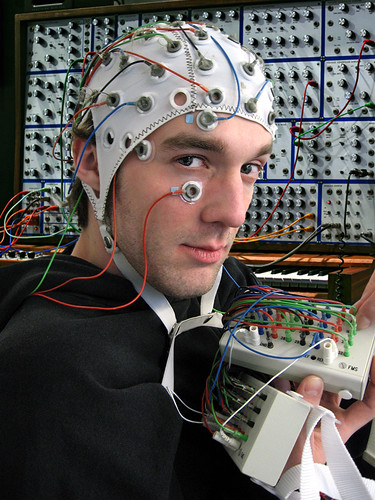I have just started taking E-learning and
Digital Cultures in Coursera. In the first week we had to watch four short
movies and discuss them in term of being a utopian or dystopian view of
technology. After watching a the four movies, I have decided to post my take on
them answering the questions and commenting in terms of their utopian\dystopian
depiction of technology. Finally we had to come up with our own utopian or dystopian story told in a movie,
Here is my take:
Here is my take:
Bendito
Machine III and Heaven Sent Technology
While watching the movie, I kept thinking
to myself about the messages it was trying to convey. One message, in my
opinion, was that technology brings progress and change. If this change and
progress is for the better, is another issue. As I watched these heaven sent novelties
take over this little tribesmen lives and make them neglect other aspects of
their existence, I could also see that it brought information and entertainment.
However, as I saw old technology being dumped because of the new one, I have to
agree that it suggests that this obsession with technology, so present in our
world, has a great impact on the environment because it generates a compulsion
for thoughtless consumption and, as a consequence, the habit of dumping the old
to welcome the new. The characters in this short movie do not seem to have a choice
concerning the technology they use. However, they could create something
instead of waiting for it to fall from the sky. To me, they seem a bit idle and
always wanting to be entertained by a technology that is alien to them. It does
not seem that technology provides them with what they need, they seem to simply
get used and addicted to it. The technologies portrayed in the film are
generally, as I have pointed out, alien to the characters, subject to constant
glitches, unpredictable, and unreliable. The view of technology is quite
dystopian and it enslaves the characters.
Inbox
and the Utopian Idea of Perfect Communication
This short movie shows how people can
connect through web-based technology. At first, one could argue that it is a
utopian account of how humans interact with and use technogy because it shows
it is possible to meet people in many ways. I could even say it is neither,
because I have grown to believe that the way we meet people on the web is not
very much different than the way we meet people in real life. There are always
limitations and insecurities as go back and forth in our minds never sure what
impact we cause on others. When we first meet someone we never know if we will
meet again and communication breakdowns often occur independent of medium. It
is, in my opinion, a realistic account, if it is possible to say so, because to
me it seems utopian the idea of communication and romance without glitches and
communication breakdowns.
Thursday
and The Illusion of Gaining Control
The film presents technology as something
that many times blinds humans preventing them to see the beauties of the natural
world that lie above their heads, beneath their feet, and in front of their
very eyes. Technology is portrayed as a second class substitute for brighter
and enhanced equivalents in nature. It suggests that the price we pay for
replacing the affordances of the natural world by manmade wonders is losing
contact with ourselves and with the cycles of nature. On the other hand, making
such substitution we gain control of our own bodies, our emotions, and our
routine. Tech gadgets are the ones who have agency in this film. However, I ask myself, is it possible to have control? Isn't it utopian to believe we can take the reins of our emotions?
New
Media x Bendito Machine
Similarities
In both short movies the machines have a
great ecological impact. Just like in the first one, the second contains a
reference to the skies thus implying a sort of helpless situation in which once
characters\humanity cannot control the skies they cannot control the
machines\technology.
Differences
The first difference is that Bendito Machine
depicts a world that is still run by the characters, whereas New Media shows us
an apocalyptical scenario in which whoever and whatever existed is a process of
being destroyed, drained, or controlled. In addition to that, in Bendito Machine
technology is not necessarily evil, it is asked for in a sort of prayer to the
gods, while in New Media it looks more like an uninvited or invading alien
force. In the first movie, technology comes into one form only and seems to be
present only at one sphere of life and characters seem to have a choice, in the
second movie it is ubiquitous occupying every corner of the habitat, even our
bodies, and there is no choice. In the first movie technology is subject to
glitches and needs constant updates while in the second it is state of the art
and evolved to have a mind of its own. Finally, the ecological impact seems to
be localized in one (limited to a landfill) and overspread in the second.
The Matrix and the Singularity
The Matrix and the Singularity
As we become more dependent of technology and
technology itself moves towards integration with gadgets and with our own
bodies in so many ways, The Matrix is a perfect dystopian story for our times.
The movie tells the story of how technology took over our bodies and minds and controlled
the world. In such an apocalyptic world as the one depicted in the movie, I ask
myself, if it is really a dystopic story. I really believe that this
singularity is humanities future and the technology featured in The Matrix seem
to protect humans from noticing the grim reality surrounding them. Thinking
like that one can draw a parallel between the heroes and the family of birds in
Thursday: they seem lonely and doomed to disappear as they struggle to survive.
Survival of nature and of reality as we perceive is doomed in a world dominated
by technology. If The Matrix world will become a reality maybe we are just starting to sleep.



